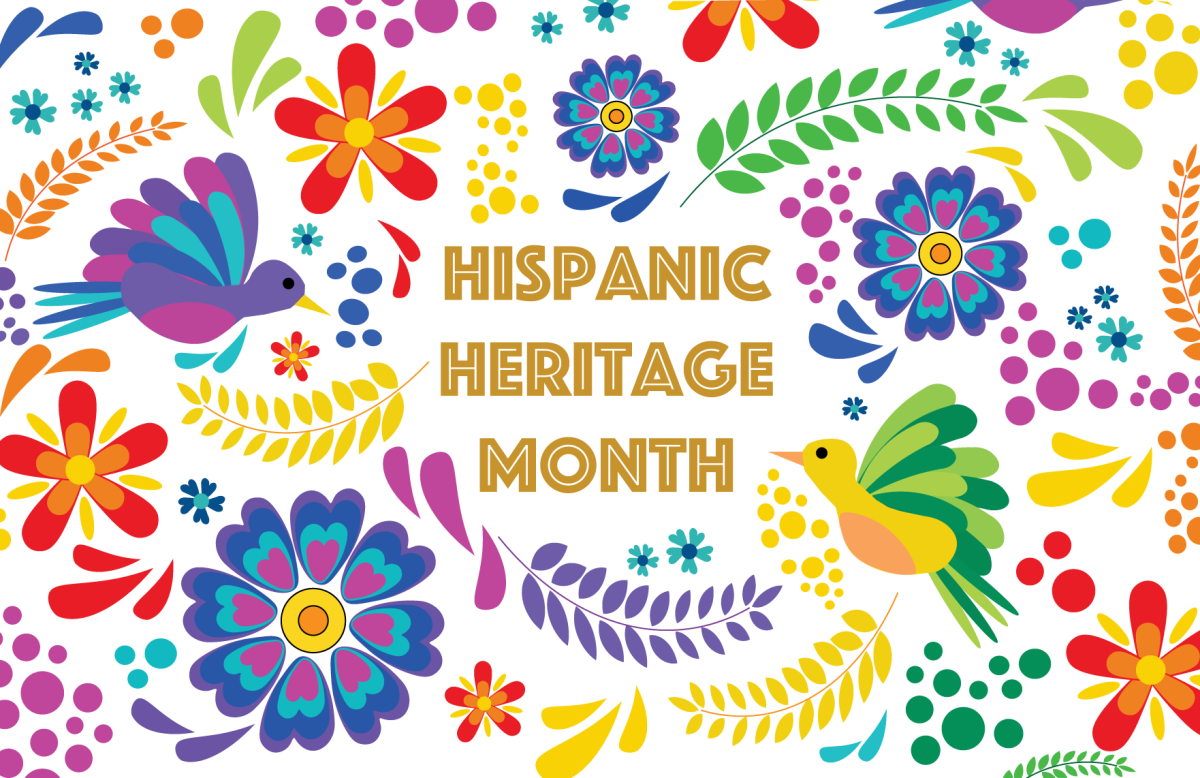What is Hispanic Heritage Month truly about? Many may have thought of Mariachi, or Tango, or maybe even Flamenco, and that would be correct. Hispanic heritage incorporates all of those things, even though they are all from different cultures. This is because Hispanic Heritage Month is not just about one culture. It is about 21 unique spanish-speaking cultures and how they’ve all found themselves within the great melting pot of the United States. That is why Americans celebrate this month; because it is about them and their ancestry. Immigrants built this country and so they celebrate Hispanic Heritage Month each year. It is no wonder why “Spanish is the second most spoken language in the US…” Spanish teacher Rosario Trejo-Mendio said, “…And I don’t think students realize how important it is, or what difference it would make if they were able to communicate in Spanish as well.”
For many students, however, the opportunity to finish out their high school Spanish education has been taken away. According to former Spanish teacher Wanda Spraker “ … they had no choice because the school lost 3 Spanish teachers at the end of the school year and with the budget cut they couldn’t hire a new Spanish teacher. I do believe it was not an easy decision on their part… ” This leaves many students wondering whether or not they will be receiving the spanish honors that they would have, had they been able to take their fourth year of spanish. “I would say yeah” said Principle Keith Brook, “I would say if they have met the criteria…I would not want to deprive the students of the recognition that they’ve earned so i would love to see those students recognized.” Students have also been wondering weather spanish five with make a resurgence and what they can do to ensure it’s renewal. “I think a part of it is that students don’t know the importance of learning a second language” Trejo said, pointing out the lack of student interest in spanish, “We need more teachers talking to students about the importance and the benefits that come along with knowing a different language, especially Spanish.”
Being bilingual is a huge benefit here in the U.S. Studies from the “Language connects foundation” show that 9 out of 10 jobs rely on a person being bilingual. Many of the Spanish teachers did not see themselves becoming a Spanish teacher growing up. “I did not see myself as a Spanish teacher. I actually went to college and earned a bachelor’s degree in nursing. I worked for six years right after graduation, three of those I worked and served as a Navy nurse. I stayed home after I had my first child, taught them at home and I went back to work after my youngest child was full-time in school. Nursing didn’t work for me so I went to teaching,” said Spraker. Knowing a second language may also give students a more well-rounded mind. Studies show that bilingual individuals have longer attention spans and a stronger ability to multitask. Spanish teacher Jessica Meyer says “ I think my brain can think in two different ways…. You know so much more vocabulary than the average person because you are thinking in two different languages, two different perspectives. You know your brain is just a lot more open-minded.” Mayor said, pointing out the benefits of learning a language specifically at a young age saying you master “theory of mind” earlier which teaches a person empathy.
Students taking Spanish know that the language goes hand and hand with the culture. Trejo describes the cultural aspect of Spanish class as what she is “most excited for.” The Spanish curriculum blends geography, culture study, grammar, and reading comprehension. Meyer recounts her time learning the language as a nonnative speaker; “ Learning a language that is not your native language is a lot of work you’ve got to really keep persisting and not give up. You’re gonna embarrass yourself, there’s gonna be days where you’re like ‘I’m not improving’ and then all the sudden it just clicks.” Meyer said, “I just have such a more awareness of the diversity of Latin America and Spain that I feel I would like more of the students to learn about.” Trejo describes the importance of teaching the culture, she said “Learning the language will create empathy.” Both teachers also emphasize the importance of labels when speaking of these people and cultures. Knowing that “Latino/Latina/Latine” describes a person from South America, “Hispanic” describes someone from any Spanish-speaking country, and “Spanish” only applies to a person from Spain a common misconception.
So how can one celebrate and represent these cultures respectfully and accurately? Spraker said, “While I taught in the school…. I did several activities with my students ranging from having students create various projects about either country’s culture, food, music, to influential Spanish speakers in the United States and their contribution to the United States.” Trejo describes similar projects involving makeup and food; “I have them make pan de muerto for the day of the dead.” Meyor offered a more communal solution and said “As far as I know we won’t be having an assembly or anything. I know a lot of other schools do that… Maybe that could be something we could do in the future…A celebration or a night…And maybe that might make students more motivated to learn Spanish too.” Ultimately Hispanic Culture is a big part of the culture of America because that is where a lot of them came from. “Like I always tell my students you are missing out of a lot of things..” said Trejo, “… in English, it’s not the same, trust me… There are a lot of things that get left out that get lost in translation.”




